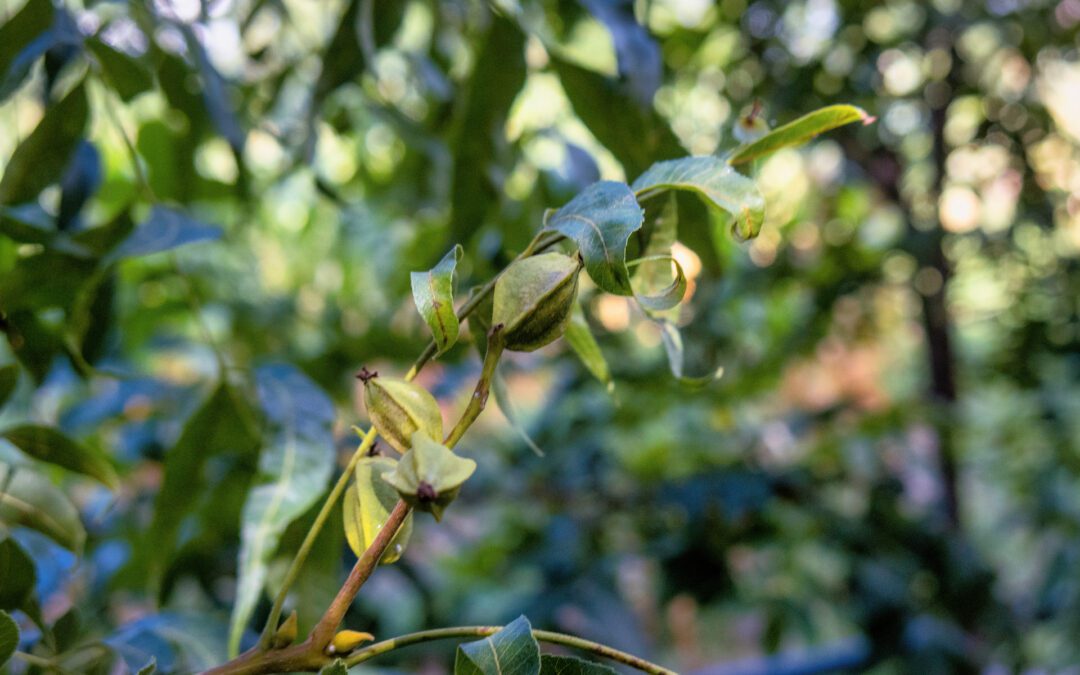Pecan trees are an excellent addition to your garden. They protect your home from the heat in the summer and cold in the winter, provide shade, and produce food. Plus, a well-kept pecan tree simply looks great on your property. With so many reasons to choose pecan trees this fall, here are our top pecan tree tips.
Best Time to Plant Pecan Trees
Pecan trees grow in the spring. That means the best time to plant them is during their dormant season, in the winter. Planting in winter allows the trees to establish roots in good time before spring.
The earlier you plant during your trees’ dormant season (November – February), the more time they have to establish roots before their growing season starts in spring. Stronger roots will support growth better than weaker, less established roots can.
What can you do now? Fall is a great time to talk to a pecan tree nursery and place your order. Our team would be delighted to help you choose the most suitable species for your property and prepare for the trees’ arrival. By ordering early, you can ensure that your variety of choice will be available come planting time.
Preparing for Pecan Season
Fall is also a great time to prepare for the arrival of your trees. By being ready to plant them as soon as they arrive, you minimize storage time and the risk of the pecan trees’ roots being exposed to sun and wind.
Dig the hole or holes for your pecan trees before they arrive. Each hole needs to be large enough to accommodate the roots of a young pecan tree in a spread-out position. They also need to be deep enough to hold the length of the roots and set your new tree so that its bud is around four inches above the final soil level.
How to Spot a Healthy Pecan Tree
You don’t need to be a horticulturist to spot healthy pecan trees or identify the first signs of common disease. Start by checking the leaves and roots of your trees to identify the black spots pointing toward pecan scab or the yellowing leaves that might indicate rosette.
Crown gall mostly affects the roots of your trees, whilst blotch and powdery mildew can also be spotted on the leaves. If you believe your trees are suffering from a pecan disease, feel free to reach out for expert advice on how to nurse them back to health.
Ensuring Your Tree Has Strong Roots
Planting early during the dormant season and placing new trees in large enough holes to avoid cramping their roots are two ways of ensuring your tree has strong roots.
In addition, you should also consider your soil. Sandy loam soils with well-drained subsoil work best. However, you can also plant pecan trees in other soil types. We are happy to advise you further if you’re concerned that your soil is not ideal for pecan trees.
One more pecan tree tip – don’t forget to fertilize. Like all other plants and trees, pecan trees need the right nourishment to grow and flourish. Without the right fertilizer, they will struggle to maintain growth and produce the pecans you’re probably already looking forward to. Which fertilizer is right for you depends on the type of soil your trees are growing in. Soil samples and leaf samples are often the best way to determine how to nourish your trees!
Purchase a Tree from a Pecan Nursery
With nearly five decades of experience in growing pecan trees in Georgia, our pecan tree nursery team knows what it takes to select, plant, and grow pecan trees successfully. Plus, we’re more than happy to share our experience with you, whether you are planting your first pecan tree, looking to add to your orchard, or just need a bit of advice.
Our goal is to help you grow strong, long-lasting pecan trees that will become a firm favorite among your family and friends for decades to come.

